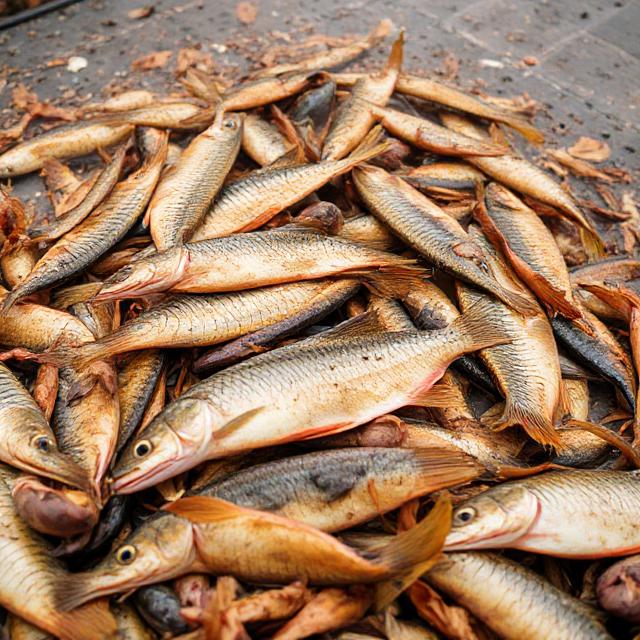Solar Fish Dryer Technology: Revolutionizing Fish Processing for Coastal Communities and School Meal Programs
In the bustling coastal villages of India, where the rhythmic sounds of waves meet the daily hustle of fishing communities, a revolutionary technology is quietly transforming lives. Solar fish dryer technology has emerged as a game-changing solution that addresses multiple challenges simultaneously: food security, nutrition enhancement, women’s empowerment, and environmental sustainability. This innovative approach to fish processing is particularly significant for coastal communities where traditional sun-drying methods have long dominated the post-harvest processing landscape.
The Nutritional Powerhouse of Dried Fish
Dried fish represents one of nature’s most concentrated sources of essential nutrients, making it an invaluable addition to community nutrition programs. Rich in high-quality protein, dried fish contains all essential amino acids necessary for human growth and development. The nutritional profile of properly processed dried fish includes substantial amounts of calcium for bone health, omega-3 fatty acids for cardiovascular and brain function, and vitamin D for immune system support.
For coastal fish-eating communities, dried fish has traditionally served as a reliable protein source during monsoon seasons when fresh fishing becomes challenging. The solar drying process preserves these nutritional benefits while extending shelf life significantly, making it an ideal supplement for anganwadi centers and mid-day meal programs that serve millions of children across India’s coastal states.
The protein content in dried fish often exceeds 50-60%, making it one of the most protein-dense foods available. This characteristic makes solar-dried fish particularly valuable for addressing malnutrition in vulnerable populations, especially children who require adequate protein for proper physical and cognitive development.
Traditional Fish Drying Challenges
Conventional fish drying methods in coastal communities have persisted for generations, but they come with significant drawbacks that modern technology can address. Traditional open-sun drying yields unhygienic final products and leads to environmental issues and hygienic problems for coastal populations. The exposure to dust, flies, rain, and other environmental contaminants during traditional drying processes results in considerable quality degradation and potential health risks.
Salt-heavy traditional preservation methods, while effective for extending shelf life, often make the final product less suitable for sensitive populations, including young children in school meal programs. Excessive sodium content poses health risks and limits the versatility of dried fish in various culinary applications.
Post-harvest losses in traditional drying methods can reach 25-30% due to pest infestation, weather-related spoilage, and contamination. These losses directly impact the economic viability of fishing communities and reduce the availability of nutritious food for broader consumption.
Solar Fish Dryer Technology: A Sustainable Solution
Solar fish dryer technology represents a paradigm shift in post-harvest fish processing, offering a clean, efficient, and economically viable alternative to traditional methods. Solar dryers function like greenhouses, featuring shelves where fish can dry in a protected environment, avoiding exposure to contaminants such as sand and birds. This controlled environment ensures consistent quality and safety standards that meet modern food processing requirements.
The technology harnesses renewable solar energy to create optimal drying conditions while protecting the product from environmental contamination. Advanced solar dryer designs incorporate UV-filtered glass panels, proper ventilation systems, and temperature control mechanisms that ensure uniform drying throughout the process.
Modern solar dryers can significantly reduce drying time compared to traditional methods while maintaining or improving nutritional quality. The controlled environment prevents the growth of harmful microorganisms and reduces the need for excessive salt preservation, resulting in a healthier final product.
MSSRF’s Pioneering Work with Fisherwomen
The M.S. Swaminathan Research Foundation (MSSRF) has been at the forefront of implementing solar fish drying technology in Indian coastal communities. The Fish for All Research and Training Centre has been established at Kaveripoompattinam (Poompuhar) in Nagapattanam District, Tamil Nadu, adopting a holistic approach in resource management and sustainable livelihoods.
MSSRF’s comprehensive approach extends beyond technology transfer to include capacity building, market linkage development, and women’s empowerment initiatives. The organization has organized joint training programs on fish processing and value-addition, and has been developing Information, Communication, and Technology solutions for fisherwomen.
The foundation’s work demonstrates how technological interventions can be successfully integrated with community development programs to create sustainable impact. By focusing on fisherwomen as key stakeholders, MSSRF addresses gender equity issues while building local capacity for technology adoption and maintenance.
Economic Impact and Value Addition
Solar fish drying technology creates multiple economic opportunities within coastal communities. Primary processors, typically fisherwomen, can achieve better prices for their products due to improved quality and extended shelf life. The hygienic processing environment enables access to premium markets, including institutional buyers such as school meal programs and anganwadi centers.
Value addition opportunities extend beyond basic drying to include specialized products such as fish powders, ready-to-cook preparations, and fortified food supplements. These value-added products command higher market prices and create additional employment opportunities in packaging, marketing, and distribution.
The reduced post-harvest losses achieved through solar drying technology directly translate to increased income for fishing families. Studies have shown that communities using solar dryers can reduce product losses by up to 70% compared to traditional drying methods, significantly improving household food security and economic stability.
Integration with School Nutrition Programs
The integration of solar-dried fish into anganwadi and mid-day meal programs represents a strategic approach to addressing child malnutrition in coastal regions. The consistent quality and safety standards achieved through solar drying make the product suitable for institutional food programs that serve vulnerable populations.
Procurement of locally processed dried fish for school meal programs creates a stable market for fishing communities while ensuring that children receive nutrient-dense foods sourced from their local environment. This approach supports both nutritional objectives and local economic development simultaneously.
The reduced salt content in solar-dried fish makes it more suitable for children’s dietary requirements compared to traditionally processed products. The controlled processing environment ensures compliance with food safety standards required for institutional feeding programs.
Environmental Sustainability and Climate Resilience
Solar fish drying technology contributes significantly to environmental sustainability by utilizing renewable energy sources and reducing reliance on fossil fuels. The technology helps coastal communities adapt to climate change impacts by providing more reliable food processing options during unpredictable weather patterns.
The reduction in fuel wood consumption for traditional smoking and drying processes helps preserve coastal forest resources and reduces carbon emissions. Solar dryers also minimize waste generation and water pollution associated with conventional fish processing methods.
Climate resilience is enhanced as solar dryers can operate effectively even during partial cloud cover and provide better protection against sudden weather changes compared to open-air drying methods.
Technical Specifications and Design Considerations
Modern solar fish dryers incorporate several key design elements that optimize performance and durability. The typical design includes a solar collector area, drying chamber with multiple tiers, ventilation system, and moisture control mechanisms. Advanced models can process up to 200 kilograms of fish per batch with multiple drying racks covered with glass and solar panels for maximum energy absorption.
Temperature control systems maintain optimal drying conditions between 45-55°C, ensuring efficient moisture removal while preserving nutritional quality. Proper ventilation design prevents condensation buildup and ensures uniform air circulation throughout the drying chamber.
Construction materials are selected for durability in coastal environments, with corrosion-resistant components and UV-stable glazing materials that withstand salt air and intense sunlight exposure.
Quality Assurance and Food Safety
Solar fish dryer technology enables consistent quality control through standardized processing conditions and contamination prevention measures. The enclosed drying environment protects products from insects, dust, and other contaminants that commonly affect traditional drying methods.
Temperature monitoring and control systems ensure that drying conditions remain within optimal ranges for pathogen elimination while preserving nutritional quality. Proper moisture control prevents the growth of harmful bacteria and fungi that can cause food spoilage and health risks.
Documentation and traceability systems can be integrated with solar drying operations to meet food safety requirements for institutional buyers and export markets, creating additional revenue opportunities for coastal communities.
Scaling and Replication Strategies
Successful scaling of solar fish drying technology requires comprehensive support systems that address technical, financial, and market-related challenges. Community-based implementation models have proven most effective, with local self-help groups or cooperatives managing shared drying facilities.
Financial mechanisms such as microfinance, government subsidies, and corporate social responsibility programs can support technology adoption at the community level. Training programs and technical support systems ensure proper operation and maintenance of solar drying equipment.
Market development initiatives are crucial for creating sustainable demand for solar-dried fish products. Partnerships with institutional buyers, retail chains, and food processing companies help establish reliable market channels for community-produced dried fish.
Future Prospects and Innovation Opportunities
The future of solar fish drying technology lies in continuous innovation and integration with digital technologies. Smart monitoring systems, IoT sensors, and mobile applications can enhance operational efficiency and quality control while providing real-time data for process optimization.
Hybrid systems that combine solar energy with biomass or electric backup heating can provide year-round processing capability and handle larger volumes during peak fishing seasons. Energy storage solutions can extend operating hours and improve processing consistency.
Research and development opportunities exist in developing specialized dryer designs for different fish species, improving energy efficiency, and creating value-added products that meet evolving market demands.
Conclusion
Solar fish dryer technology represents a transformative solution that addresses multiple development challenges in coastal communities. By providing hygienic, nutritious dried fish for school meal programs while empowering fisherwomen with sustainable income opportunities, this technology creates a positive cycle of community development and food security enhancement.
The success of initiatives like MSSRF’s Fish for All program demonstrates the potential for scaling solar fish drying technology across India’s extensive coastline. As awareness grows and support systems strengthen, this technology can play a crucial role in achieving nutritional security, women’s empowerment, and environmental sustainability in coastal regions.
The integration of solar-dried fish into anganwadi and mid-day meal programs offers a practical pathway for improving child nutrition while supporting local economic development. With continued investment in technology development, capacity building, and market linkage creation, solar fish drying can become a cornerstone of sustainable coastal development strategies.











